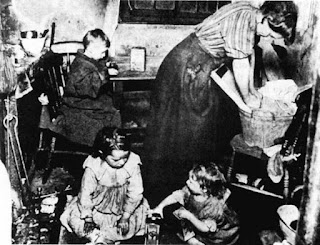The Age of Cross Cultural Interaction
The
world had reached a new age. In a matter of a few centuries, from the mid-1300s
to the late 1500s, cross cultural interaction had taken root, and the world was
trading and communicating with itself. This age of cross cultural interaction
was a rebirth of the world, bringing with it new prosperity as well as new woes
that would change the world forever. However, we must first understand the
domino effect that led to this change.
 |
| Genghis Khan as portrayed in a 14th-century Yuna era album |
The Mongols and Turks, two nomadic peoples from the
central Eurasian steppe region, conquered much of the known world and created
massive empires. The Mongols, under the leadership of Genghis Khan, would
conquer much of central Eurasia, East Asia, the Middle East, and even extend
into Europe. The Mongol Empire would quickly become the largest land based
empire in history. The Turks on the other hand were a people from the same area
as the Mongols, but who ended up migrating out of their land and moving to what
we know of today as Turkey. Both peoples were nomadic, meaning they could pick
up and carry all their belongings at a moment’s notice and thus migration was a
key part of their civilization. The migration of the Turks was a slow and
gradual process, only coming into the spot light when one of the Turkic groups
acquired power, such as the Seljuks. The Turks would end up becoming one of the
key aggressors during the Crusades and a large reason for military force being
used in the Middle East. Both groups had a profound impact on the world at the
time. For the Turks, they encouraged the Crusaders to go to war in the Middle
East, while the Mongols built an empire that span the whole known world. These
actions had a domino effect on the world; first bringing unification between
East and West, which led to the spreading of the plague from East to West,
which then led to the Renaissance, and so on.
In this time, the world also became connected in another
way. Suddenly, Sub-Saharan Africa became involved in the world. With
Sub-Saharan Africa, success had a different definition. There, conquest was not
nearly as profitable as trade and thus many trade based empires sprung up, such
as the empire of Ghana. It was from these trade empires that commodities such
as gold, salt, and slaves were traded from Africa to the rest of the world.
However, east Africa had a different experience as they were also contacted by
Arab merchants who brought Islam with them. So from this, places that we know
of today as Kenya and Tanzania became introduced to Islam.
For Sub-Saharan Africa, this integration brought many
changes. For one, as mentioned before, trade empires sprung up. These empires
would grow fabulously rich from the selling of African gold and salt, as well
as slaves. Along with riches from trade, integration brought religion and
culture to Sub-Saharan Africa. Islam was brought over to Eastern Africa in
modern day Kenya and Tanzania. With the integration of Islam, Africans saw
immense change to their culture. Africans were left with a tough struggle of
trying to keep their old ways while also integrating the culture that comes
with the religion of Islam. This struggle created a unique culture that became
prominent in much of Sub-Saharan Africa.
While Europe, Asia, and Africa were exploding with
development from integration, societies in the Americas and Oceania were still
falling behind on the technological scale. It was not due to any racial reasons
or anything of the sort, but more circumstance. Europe and Asia had all the
right pieces fall into place at the right time. For one, there was the plague;
for while the New World continued with their life styles with nothing
interfering, the plague rocked the rest of the world. For Europe especially,
the plagued killed off much of their working force, which then created the
downfall of Feudalism because of too few workers. This end in Feudalism would
bring about so many other ideas and cultural changes, so many that there are
too many to name in this paper. These changes would later be called the
Renaissance period. Because of integration, Eurasia had the plague. Because of
the plague, Eurasia had the Renaissance. This domino effect is what made
Eurasian societies sky rocket in development. The Americas and Oceania did not
have this and thus they did not develop nearly as fast. It is not the fault of
them that it did not happen, it is merely a world changing coincidence that
this series of events struck Eurasia.
 |
| The Landing of Columbus by John Vanderlyn |
Perhaps the greatest example of cross cultural
interaction that changed the world was the European exploration of the
Americas. Here, the Americas’ lack of technological development showed as the
European conquerors stormed through and started colonies. This was where the
new European exploration efforts differed from previous ones; the Europeans
were now exploring the world out of material greed. Where as in previous times,
peoples like the Romans and Greeks established colonies because of population
expansion and such, the Europeans now wished to expand to establish trade
networks and colonies to acquire wealth from.
The world was interacting with itself. This new age of
cross cultural interaction brought both good and bad consequences to the
societies around the world. While some prospered, others suffered. This
interaction is what shaped out world today and just shows how all of history is
a domino effect; one event changing the future to create another event.




Comments
Post a Comment